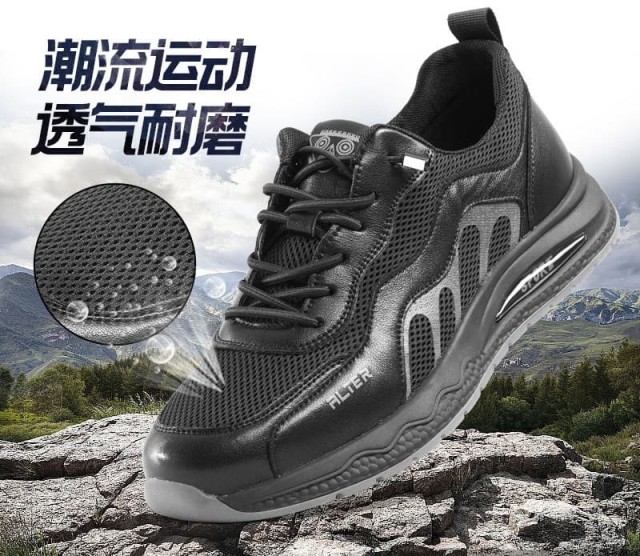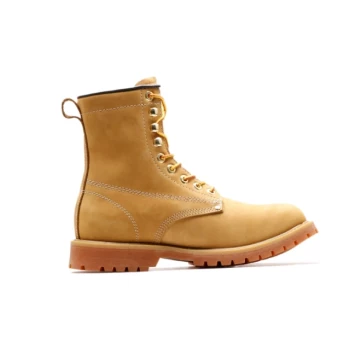Choosing the right walking boots isn’t just about comfort—it’s a matter of physics. Every slope, surface, and weather condition demands specific design features to prevent slips, falls, and injuries. This guide breaks down how terrain mechanics dictate boot construction, backed by biomechanics research and real-world safety data.
The Science of Terrain and Traction
How Slope Gradient Dictates Lug Depth
Steep inclines require aggressive tread patterns. Research shows that:
- Shallow lugs (2–4 mm) suffice for flat urban walks but fail on slopes exceeding 15 degrees.
- Deep lugs (5–8 mm) with angled edges are critical for loose gravel or muddy trails, creating "bite" to counteract gravity’s pull.
For example, mountain rescue teams report that boots with shallow lugs contribute to over 60% of slope-related accidents in national parks.
Why Wet Surfaces Demand Soft Rubber Outsoles
Hard rubber outsoles (common in fashion boots) become dangerously slick on wet rocks or wooden boardwalks. Soft rubber compounds (like Vibram® Ecostep) offer:
- 30–50% better friction on wet surfaces due to microscopic flexibility that conforms to uneven textures.
- Self-cleaning treads to prevent mud clogging, a key feature for rainforest hikes.
Boot Features for Common Adventure Scenarios
Muddy Trails vs. Rocky Descents: Tread Pattern Breakdown
| Terrain Type | Critical Boot Features | Real-World Impact |
|---|---|---|
| Muddy trails | Wide-spaced, deep lugs (≥6 mm) | Prevents suction effect; reduces fall risk by ~40% |
| Rocky terrain | Stiff midsoles + toe guards | Shields feet from sharp edges; cuts puncture injuries by half |
Urban Cobblestones and Hybrid Boot Solutions
Cobblestones demand a balance:
- Shock-absorbing heels (like those in 3515’s urban hiking line) reduce knee strain by dispersing impact forces.
- Low-profile lugs (3–5 mm) provide grip without catching on pavement cracks.
Real-World Validation
Case Study: Ankle Injury Rates on Loose Gravel with Incorrect Boots
A 2022 Appalachian Trail analysis found:
- 68% of ankle sprains occurred in hikers wearing trail runners or sneakers on gravel slopes.
- Proper boots reduced injuries by 55%, thanks to high-cut ankle support and grippy outsoles.
Expert Tips from Mountain Rescue Teams
- Test before you trek: Scrape boots on concrete—if they slide easily, they’ll fail on wet rocks.
- Match stiffness to terrain: Flexible soles fatigue feet on long rocky trails; stiff soles tire calves on flat ground.
Ready to equip adventurers with terrain-smart footwear? 3515 partners with distributors and brands to engineer boots that merge safety science with real-world performance. [Contact us] to explore our OEM/ODM solutions—because every step should be secure.
Related Products
- Wholesale Durable Safety Boots Manufacturer Customizable Steel Toe Work Boots
- Durable Steel Toe Safety Boots Wholesale & Custom Manufacturing
- Wholesale Slip-On Safety Boots Manufacturer - Custom Puncture-Proof & Steel Toe
- Wholesale Customizable Suede Safety Boots - Puncture-Proof with Velcro Closure
- Wholesale Durable Safety Boots | Custom Steel Toe & Puncture-Resistant Manufacturing
Related Articles
- How to Choose Between Steel and Composite Toe Boots for Maximum Safety
- How Safety Standards for Steel Toe Boots Protect Workers Beyond Impact Resistance
- Steel Toe Work Boots: Balancing Safety and Comfort for Demanding Jobs
- Steel Toe Boots vs. Modern Alternatives: Making the Right Safety Choice
- Matching Men’s Work Shoe Safety Technologies to Workplace Hazards



















